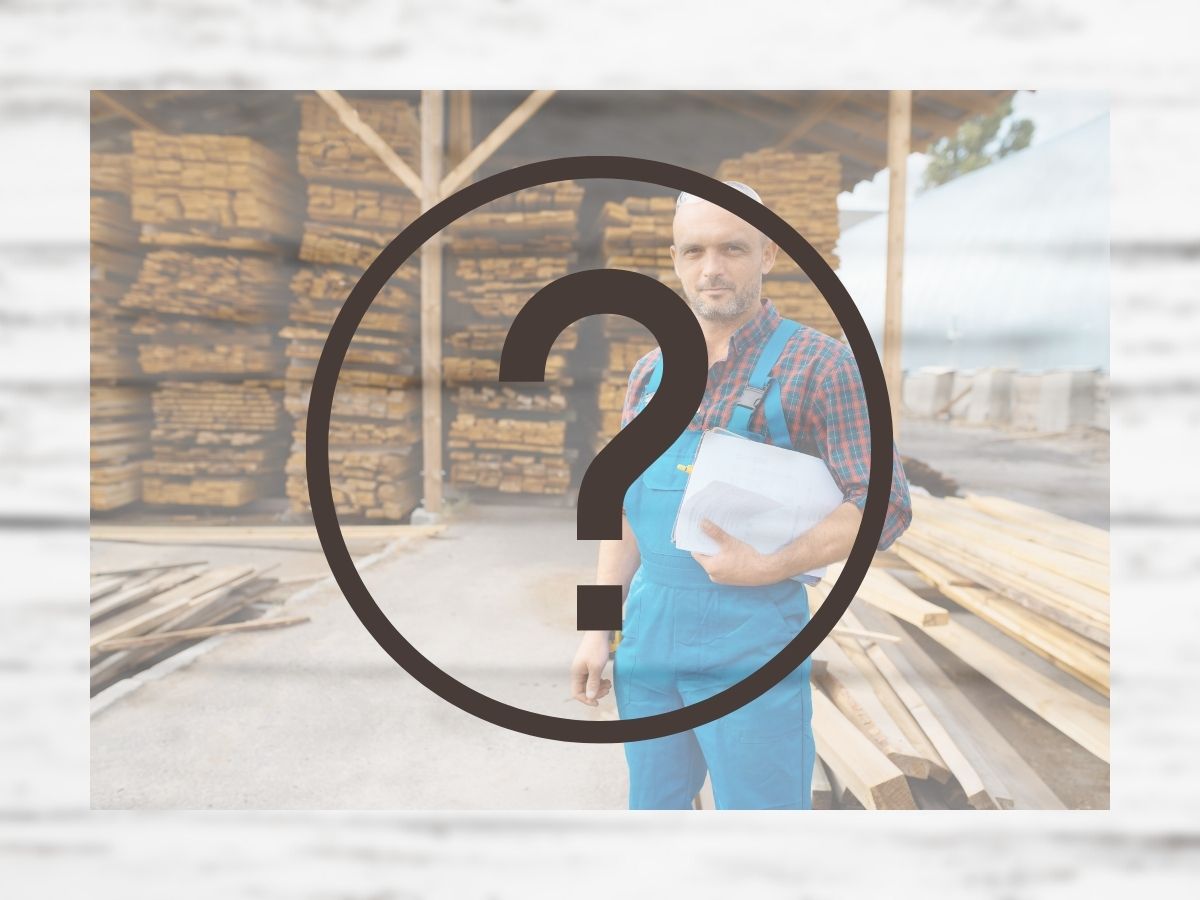If you’ve been a woodworker for a while, you may have thought about cutting your costs by sourcing your lumber somewhere else than Home Depot. We’ve put together a small guide on how you can do save quite a few bucks by buying (and even post-processing if necessary) your wood at your local sawmill.
Read on how.
Why Sawmills?
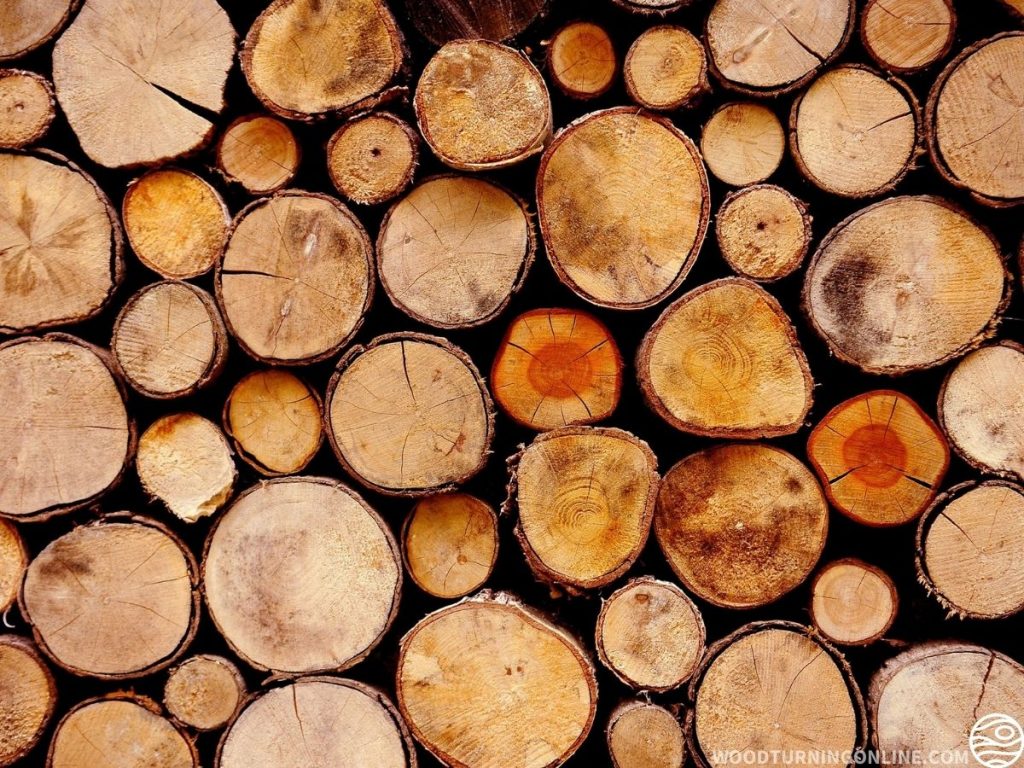
Whether you’re a DIYer or a professional, you probably purchase the lumber for your projects from a building supply store or a big-box retailer such as Home Depot, Lowe’s Walmart, etc., where you have all the types and varieties of lumber organized neatly, allowing you to compare and examine all options before purchasing for your project.
Also, the lumber in these big-box stores is dried perfectly and cut to size so you can simply purchase exactly according to your woodworking specifications and get started on your project immediately.
However, buying from big-box retailers has a couple of major limitations. Firstly, the selection of lumber that you get at a big-box store is very limited, especially when it comes to the choice of types or species of wood. The other major concern is the cost, which is extremely high in the big-box stores.
The option of sourcing the lumber directly from a sawmill is a much better option and significantly cheaper too. Although you may have to make some additional preparations and processes before you can use the lumber, which may be overwhelming at the start, nevertheless, the wider range of hardwood options in terms of the wood species, thickness, grade, and cuts you can choose from and the amount of money you’ll save by purchasing the lumber directly from the sawmill can offset the drawbacks.
A visit to the sawmill can however be rather daunting, especially for the inexperienced. With the huge number of options of lumber available, the new jargon and pricing can get quite overwhelming. In this article, we’ll discuss everything you need to know about how you can purchase lumber directly and in time, you’re sure to love the benefits of purchasing lumber directly from the sawmill.
How to Find a Sawmill to Purchase Lumber?
When shopping for lumber, the first thing to do is to locate a sawmill in your area that will sell lumber to individual customers. Usually, sawmills may be small family-owned and run mills, small mills, and large commercial mills.
The large sawmills usually focus on supplying to large commercial constructions, industries, and operations and do not sell to individual buyers.
The best option is to purchase from the small regional sawmills as these operations also have kilns, which can be an added time-saving advantage for you. However, you may have to purchase a minimum quantity of lumber from these sawmills. Family-owned and run sawmills are probably the best option for individual woodworkers to purchase from.
You can visit their farm or home to view and select the lumber you want. These operations usually own portable sawmills, which they will use to cut the wooden logs into slabs according to your requirement.
These small sawmills are usually the best and cheapest option for individual woodworkers and they may also offer additional services like a kiln or planing and surfacing.
The best way to find a small or mid-sized sawmill willing to sell you lumber is by doing an internet search of the sawmills in your local area or city. You can also search on sites such as Facebook, Craigslist, or your local directory. You could also contact your local woodworker’s association or guild and ask for recommendations for reputable sawmills, wood dealers, or distributors.
Things to Consider When Purchasing Lumber from Sawmills
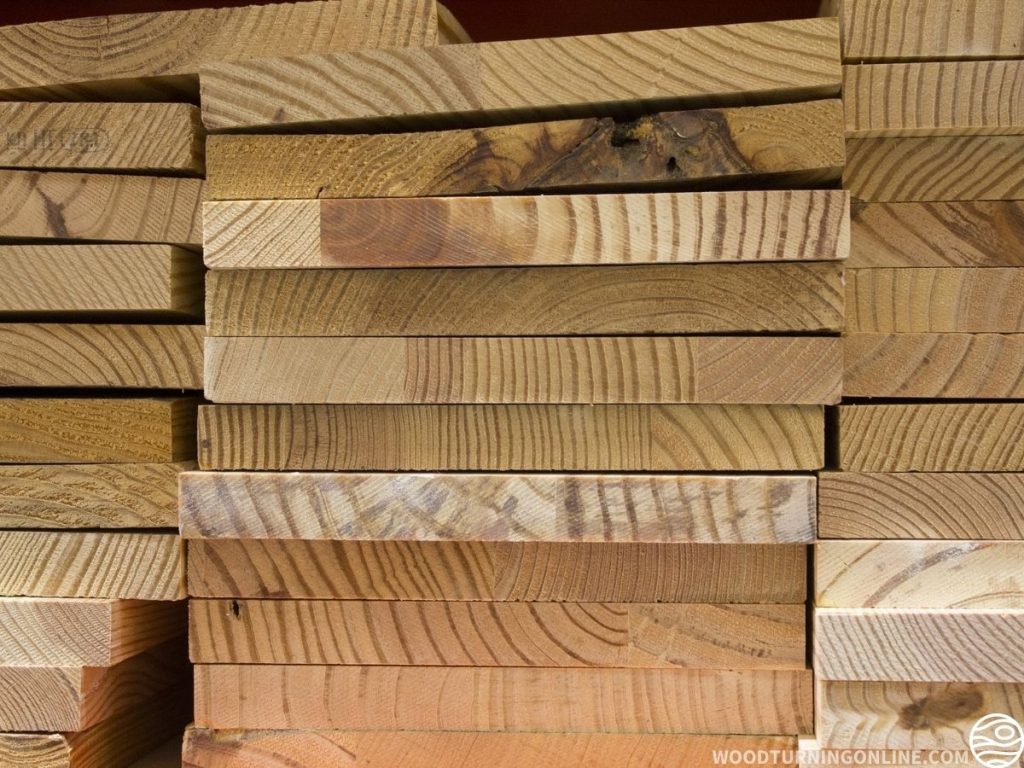
A very important thing to understand is that purchasing lumber is very different compared to purchasing it from your local building supply store, hardware store, or a big-box retailer. And, here are a few things to remember while shopping for lumber from a sawmill.
Board Feet
Usually, sawmills sell wood by volume, which is typically measured in board feet (BF). This essentially makes it much easier to ascertain the pricing across the various types of hardwoods of varied thickness, lengths, and widths.
Board feet is calculated using the formula—1 BF (board foot) = length (inches) x thickness (inches) x width (feet)/12. If you don’t have a calculator at hand to do your calculations at the sawmill, then this handy tip can help. A 4/4 wooden board, which is 6 inches wide and 8 feet long is equal to 4 board feet. Usually, boards are cut to this size approximately and so you can determine the BF easily i.e., number of boards x 4.
The prices of the lumber will depend on the type of wood you choose. Some sawmills also price their lumber depending on the size you want to purchase. For example, if the board you want is very thick or wide, then you may have to pay more compared to a board of regular size.
Measurements
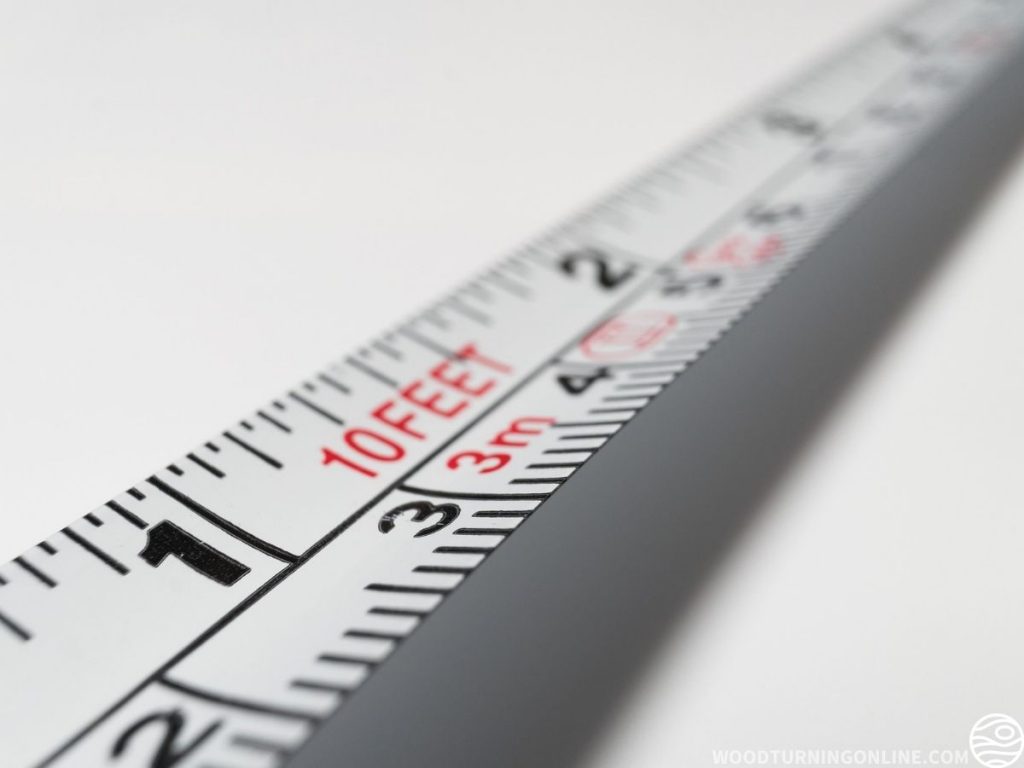
It is important to know that the thickness of the lumber is measured in a different manner by sawmills. Typically, the thickness is measured in quarters instead of inches.
For instance, a board that is 1-inch thick is referred to as a 4/4 or a four-quarter board, while a board that is 2 inches thick is referred to as 8/4 or eight quarter. Typically, lumber can be purchased in thicknesses such as 16/4”, 12/4”, 6/4”, and 5/4”.
Lumber is usually pre-milled and then it is dried. So, the board that originally was 4/4” in thickness, will be actually around ¾” to ⅞” after the entire process. Despite the actual thickness of the lumber, the cost of it will be at the maximum rate that is for 1-inch thickness for 4/4 lumber and 2-inch thickness for 8/4 lumber and the price will not be reduced just because the wood is thinner after the pre-milling and drying processes.
Types of Wood Cuts
Typically, when purchasing lumber from the sawmill, you must understand that there are different types of cuts. This will help you to choose the lumber according to your woodworking requirements. Usually, logs are commonly cut in 3 methods—plain sawn, quarter sawn and rift sawn and the cut can be identified easily by the end grain pattern.
Plain Sawn or Flat Sawn
This is the most common type of cut and easiest too, which is why they are the cheapest to produce. The wastage is very less when you use plain sawn cuts as the sawmill uses the entire log. The board face usually has a cathedral-like grain pattern and the end grain runs horizontally. Typically, the seasonal expansion occurs across the board’s width.
Quarter Sawn
In this type of cut, the lumber is divided into quarters for the cut. Quartersawn cuts are long-lasting and do not tend to warp over time. The method makes the lumber structurally stronger and they also dry, as well as shrink uniformly. Usually, quarter sawn cuts are used when the grain of the wood is very beautiful, for instance, white oak.
The face grain in the case of quarter-sawn cuts is straight, with vertical end grain. The boards cut using this method are usually quite stable because the seasonal wood movement is over the wood’s thickness.
And, if you’re looking for stable lumber stock for cabinets, tabletops, and flooring, then quarter sawn cut is the best, especially if the type of wood and the grain is very attractive.
Rift Sawn
Rift sawn cut is quite similar to quarter-sawn; however, it is less common. Rift sawn cut is where the cutting is usually at an angle of 30 and 45 degrees to the log’s center. The face grain in the case of rift sawn cut is completely straight, while the end grain is between vertical and horizontal.
Rift sawn wood is more stable compared to flat sawn wood and is usually used for furniture, especially for table legs, where you want all the pieces to match.
Lumber Grades
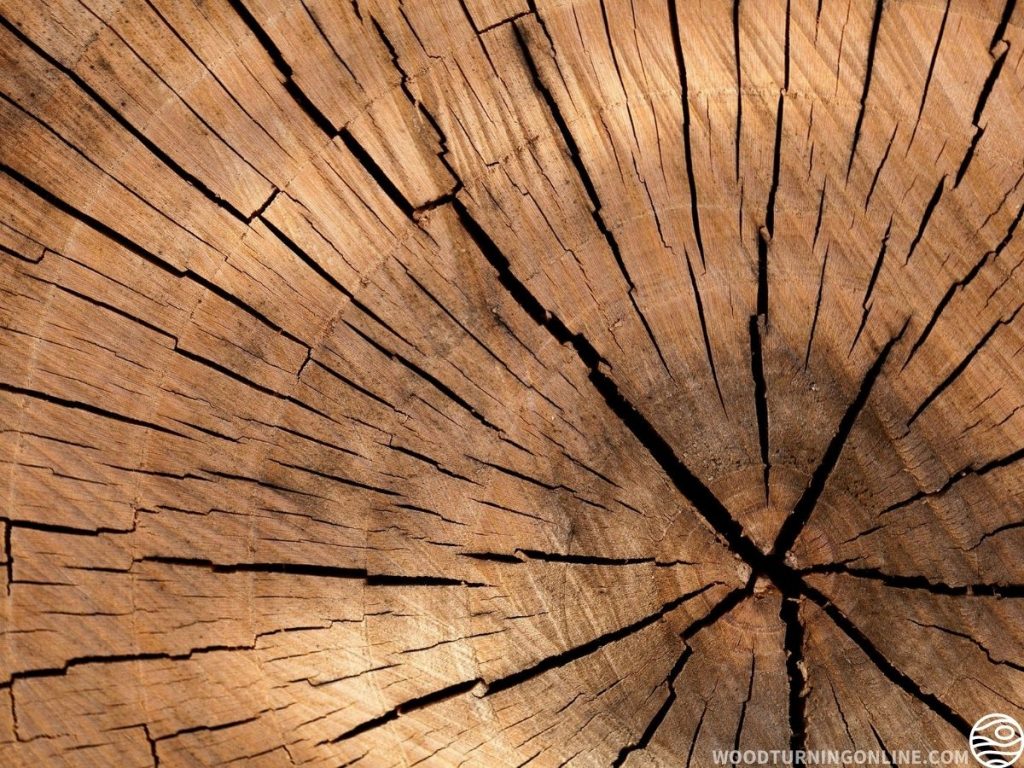
When purchasing lumber, you must check the grade of the lumber, which is essentially the amount of material in the board that is usable. The higher the grade of lumber, the lesser the defects it will have i.e., knots, etc. The various grades of lumber are:
- FAS (Firsts & Seconds): These boards are of the highest quality, which is almost perfect, without any defects.
- Select: In this type, one side is close to perfect, while the other side may have minor defects.
- F1F (Firsts One Face): In these types of lumber, one of the sides is almost perfect without any defects, while the other side may have some minor defects.
- #1 Common: In these boards, there is a high percentage of clear surfaces; however, they also have minor defects.
- #2A Common: In these boards, there is a high percentage of clear surfaces; however, they also have some defects.
- #2B Common: In these boards, there is a high percentage of sound surfaces; however, they also have some defects.
- #3A Common: In these boards, there is a moderate percentage of clear surfaces; however, they have many defects.
- #3B Common: In these boards, there is a moderate percentage of sound surfaces; however, they have many defects.
Your choice of wood will essentially depend on the type of woodworking project. For a basic DIY job, #1 Common or #2 Common boards are sufficient. These are inexpensive, allowing you to save money.
However, if you’re installing molding in your home or building furniture, then it is better to choose a higher grade of wood such as FAS, F1S, or Select board.
Lumber Defects
When purchasing lumber from the sawmill, apart from the grade of the lumber, it is important to check the defects in the wood. Some defects are present naturally or when the wood is manufactured, while other defects develop later or become worse as the wood starts aging. There are essentially 2 types of defects that you must look out for in the lumber, i.e., natural defects and manufacturing defects.
Natural defects are usually caused by rapid tree growth, insects, fungal attack, broken limbs, or some other injury. Some defects may be caused because of the expansion and shrinking of the wood because of the presence of moisture in the air.
The mechanical or manufacturing defects are usually caused because of improper sawing, drying (seasoning), machining (conversion), handling, or storage of the wood. The defects in the wood not only mars its appearance, but also its durability, strength, utility and even cause decay, thus reducing its economic value.
Natural Defects
Some of the common natural defects include:
- Bark pockets
- Burls
- Bird pecks
- Coarse grain
- Fungal Damage: Brown rot, blue stain, heart rot, dry rot, white rot and wet rot
- Insect Defects: Pin-hole borers, wood-boring beetles and termites
- Knots: Sound or tight knots, unsound or loose knots, knothole encased knots and spike knots
- Raised grain
- Shake: Star shake, ring shake
- Split
- Spalting
- Stains
- Twisted fibers
Natural defects such as bird’s eye, spalting, wormy wood, quilted and curly grain are desirable wood defects that woodworkers value highly and even raise the board’s price.
Manufacturing Defects
Conversion Defects
- Shake
- Diagonal grain
- Chip marks
- Wane
- Torn grain
- Machine gouge
- Machine burn
Seasoning Defects
- Checks
- Bowing
- Twisting
- Crook
- Spring
- Cupping
- Case hardening
- Honeycombing
Buying a higher grade of lumber right at the start of your project can help to reduce the number of defects.
Moisture Content
We’ve written a whole note about how wet or dry can your wood be for projects, and how to dry it.
Milling Process
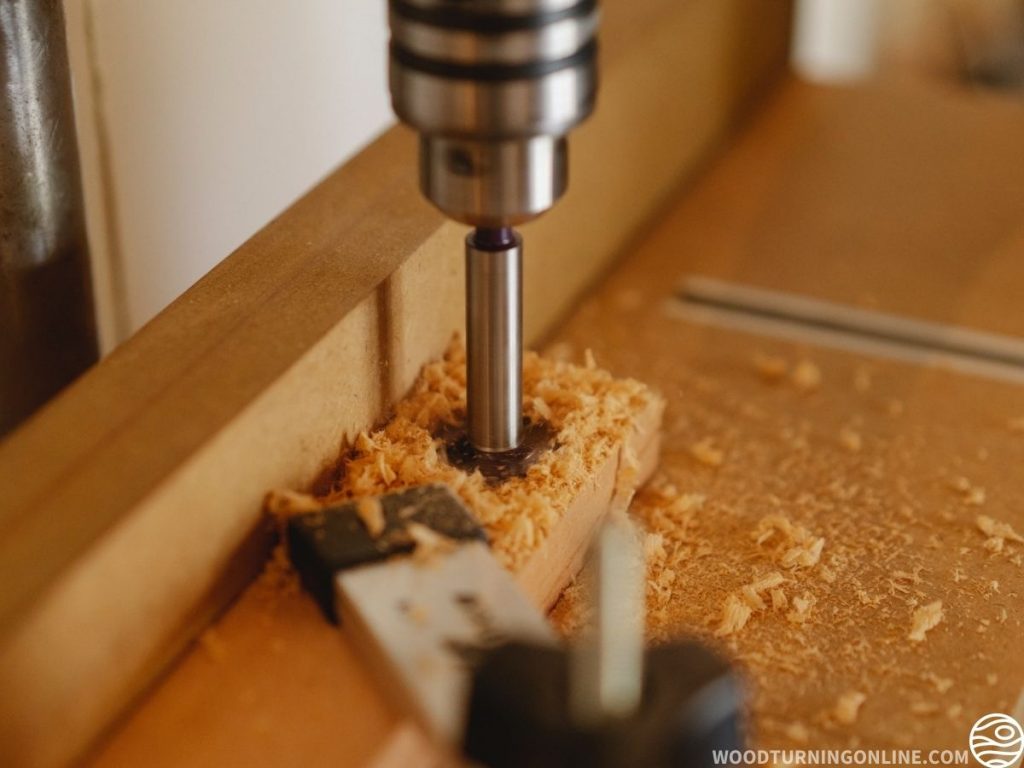
The final thing you need to know about purchasing lumber from the sawmill is the milling process, which is essentially the process where the cut log is converted into a straight board that you can use for your woodworking projects.
Usually, sawmills cut the log using one of the three methods as discussed earlier i.e., plain sawn, rift sawn, and quarter sawn. The cutting is usually done with a band saw and since imperfect round logs are being cut, the cuts will not be parallel and straight.
Many sawmills do not provide any extra services once the logs of wood are cut, while others offer additional services such as planing, getting a straight edge, etc.
You must determine what type of services the sawmill is offering so that you can make sure that you get the proper tools and equipment at home so that you can complete the final surfacing process at home.
Typically, mid-sized sawmills will most likely have the equipment and facilities to provide surfacing services as compared to smaller sawmills, which may not be equipped to handle these services. However, if you decide to get the sawmill to do the surfacing of the boards for you, you can expect to pay an extra charge per BF.
However, it is recommended that you use the services of the sawmill, if available, despite the extra cost, because it can save you a lot of time and effort. The additional cost per board foot that you pay to have the boards kiln-dried, milled, and surfaced by the sawmill will be still much cheaper compared to what you will pay in a big-box retail or commercial store.
Wood Surfacing
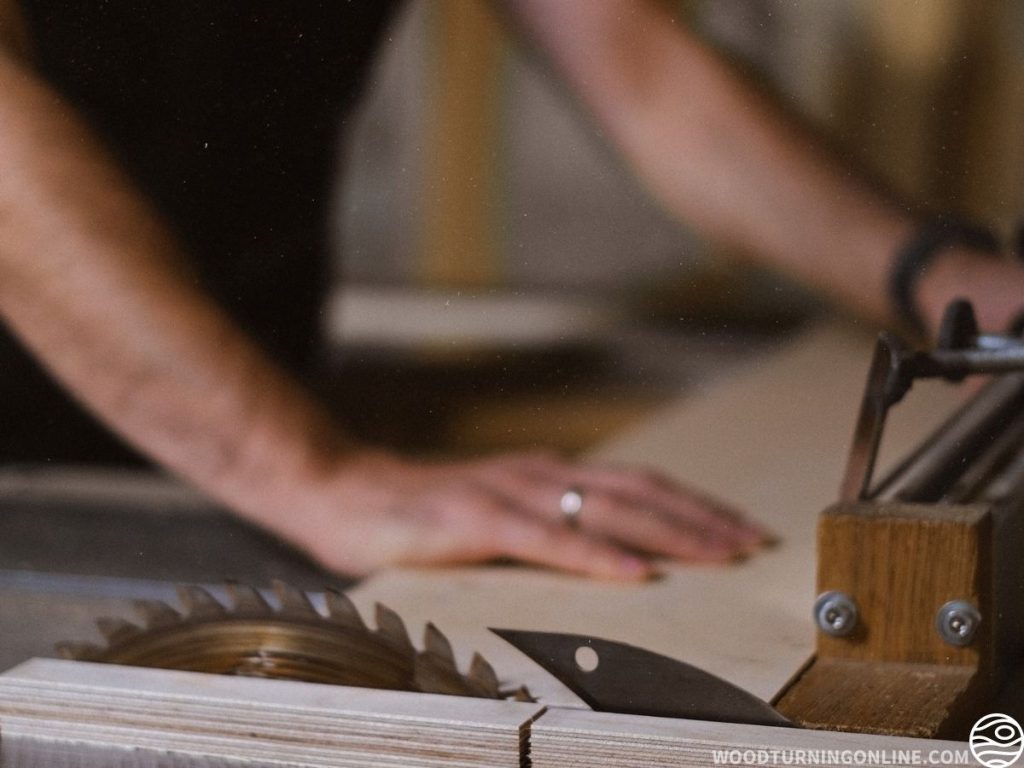
The process of the surfacing of the wood from a sawmill is also called S2S, S3S, or S4S, which refers to “Surfaced # Sides.” For instance, S4S refers to surfaced 4 sides.
The common surface options include:
None
Having no surfacing is the most common and cheapest option; however, this type of board will require the most work when you get started on your woodworking project. A piece of wood without any surfacing essentially means that you get a board that has been cut from a log of wood.
This could even have a live edge, i.e., you can view the portions where the bark was stripped of the tree. So, before using an unsurfaced piece of wood for your woodworking, you will need to prepare it first for which you will require proper tools such as a table saw, planer and jointer.
Firstly, you need to ensure that the edge of the board is straight, which you can achieve by making use of a jointer. The edge of the board must be run over the jointer several times to get a straight edge.
Every time that you run the board over the jointer, a layer of wood will be peeled away from the board and after a few runs, you will get a straight edge that you can start working with.
Once you achieve a straight edge, you can run the board through a table saw and cut the board according to the required width. The final step of surfacing involves running the board through the planer, which trims small layers of the boards till the desired thickness is achieved.
S2S
S2S boards are those that have two of the surfaces that have been surfaced. Usually, S2S boards are planed and thus, the board will have uniform thickness throughout, and both the faces will be smooth.
However, S2S boards do not have a straight edge and so before using them for your project, you will require to run them over with a hand plane or a jointer so that you get a straight line that you can cut to width.
S3S
These boards are usually planed like S2S boards; however, these have one straight edge, which eliminates the requirement to use a plane or jointer. You will require a table saw to cut the boards to the width that you require.
It’s a good idea to get your boards finished to an S3S quality at least, which will help you save both time and effort and you can get working on your project right away.
S4S
S4S boards are of the highest quality, they have straight edges and parallel straight sides. These boards do not require any preparation and you can use them straight away for your projects. However, S4S boards are quite expensive.
Questions to Ask When Purchasing Lumber at a Sawmill
When you visit the sawmill, often you will find the wood stacked horizontally and stickered to enhance the drying process and it is practically not possible to go through all the stacks and pick out the appropriate wood for your woodworking project.
While you may be able to look at samples of the boards; however, examining all of them may not be possible. And, when purchasing lumber from a sawmill, usually, the wood will be green or wet to some degree and so, it is important to check out a few things and ask relevant questions such as:
- Do you sell lumber to the general public?
- Do I need to order a minimum order quantity?
- Do you have kiln-dried lumber?
- What is the degree of moisture in the wood?
- Have the ends of the wood been sealed or will they crack?
- What defects does the lumber have?
- How many defects does the lumber have per board?
- What is the warpage of the wood?
- Does the wood have a similar type of coloration or is it very different?
- What are the grades of lumber available and their prices?
Things to Carry along to the Sawmill

When at the sawmill, take these with you:
- Tape measure
- Pencil
- Gloves
- Moisture meter
- Board foot (BF) cost calculator
- Straps and ropes to tie the wood that you purchase
Hope this was helpful!
